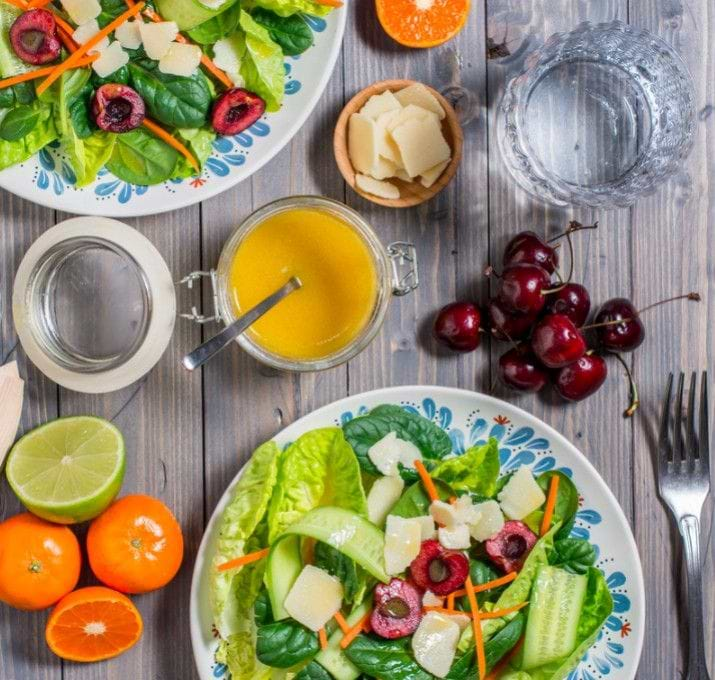The detox survival guide
There’s a lot of different advice out there on how to get summer-ready, but because we want to make sure you’re not only looking your best but feeling your best, too.
WHAT ABOUT IT ?
Why is it important to detox regularly?
The simple truth is that we are all toxic. Some of us are just more toxic than others.
If you’re healthy, your body’s natural detoxification systems run smoothly. But if you’re ingesting or absorbing a lot of toxins, then the mechanism for detoxification in the liver gets sluggish.
As a result, certain toxins can stick around and create havoc, making you feel sick, tired, and fat—or what I call “feel like crap syndrome” or FLC syndrome.
In a perfect world, we would all be toxin-free, but in reality, with our modern lifestyles, everyone has some level of toxicity. From the food we eat to the air we breathe to the chemicals we expose ourselves to, it’s pretty easy to have toxins build up. This is why it’s important to actively detoxify your body regularly.
How often—and for how long—do you recommend for an effective detox?
It depends on how toxic you are, but I recommend starting with a 10-Day Detox Diet and then see how you feel. Some people continue with a 21-day detox, while others prefer a month-long program. But anyone can do 10 days, and just about everyone who does my program feels and looks better. They see big results in just 10 days and usually want to continue.
We live in a toxic world, but what is the biggest offender most patients need to detoxify from?
Sugar, definitely. We have a big sugar problem. First of all, the science is beyond question. Sugar in all its forms is the root cause of our obesity epidemic. Sugar is linked to most of the chronic diseases that are sucking the life out of our citizens and our economy—and, increasingly, the rest of the world.
Being addicted to sugar and flour (which breaks down to sugar in your body) is not an emotional eating disorder. It’s a biological disorder, driven by hormones and neurotransmitters that fuel sugar and carb cravings—leading to uncontrolled overeating. It’s the reason nearly 70 percent of people and 40 percent of kids are overweight.
The truth is that we blame people for being overweight and sick, but it’s not their fault. Our taste buds, hormones, and brain chemistry have been hijacked by the food industry.
Who should do this?
If you’re feeling sluggish, or are addicted to sugar, or you have brain-fog, skin challenges, or just feel like crap, or if you’re just looking to reset your body and kick-start your health, you’re going to get amazing results with a detox.
What if someone doesn’t have a sugar addiction? Should they still do your detox?
Even if you don’t identify with a sugar addiction, this program is still for you. I revisit it anytime I’m feeling off or have had a particularly stressful time at work or when I’ve come back from a vacation. A detox is truly for anyone who is looking for a reset.
Since then, many people have successfully gone through The detox diets and have rid themselves of their food addictions and lost unwanted pounds and felt better than they could have ever imagined.
Sugar is mentioned as the biggest offender. What is an under-neglected part of a solid detox plan?
Many commercial detox programs are too high in sugar and too low in quality fats. That’s why I recommend good-quality fats while you’re detoxifying like eggs, organic chicken, grass-fed beef, low-mercury fish such as salmon, and olive oil as well as coconut butter and coconut oil. Thankfully, we’re seeing a paradigm shift from fat-phobia to sugar as the real health enemy.
What is the biggest mistake people make when it comes to detoxing?
To think, “Oh, I feel better now, so I can go back to doing what I was doing before.”
Consider the 10 days a chance to reconnect with your body to decide how you want to live and feel. You have a choice.
So how can people continue to optimize detoxification and continue to get its benefits regularly?
- Eat whole, fresh, real, unprocessed foods with optimal amounts of fiber, protein, healthy fats, and antioxidants.
- Eliminate food allergies. If you think you have food sensitivities, try an elimination diet. Cut out gluten, dairy, yeast, corn, soy, and eggs for a week or two (though I often find three weeks is optimal) and see how your gut feels. Also, take note of what happens to any other symptoms you may have had previously.
- Infections or bacterial overgrowths can inhibit proper gut function. Talk with a Functional Medicine practitioner to work through these and other problems.
- Replenish your digestive enzymes. When you don’t have enough digestive enzymes in your gut, you can’t properly convert the foods you eat into the raw materials necessary to run your body and brain. Take a broad-spectrum digestive enzyme with your food.
- Rebuild your friendly bacteria by taking probiotic supplements. They will help rebuild the healthy bacteria that are so essential to good gut health.
- Make sure you’re eating enough good fats in your diet and take extra omega-3 supplements, which can help cool inflammation in the gut.
- Take care of your gut lining. Use nutrients that may promote healthy gut function such as glutamine and zinc.
